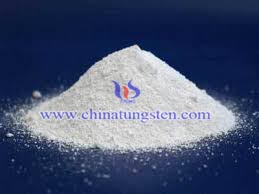Ammonium
metatungstate can be used as reagents for chemical analysis such as
for chemical diagnosis; source material for the preparation of high purity
tungsten trioxide used as a thin film substrate for certain semiconductor
devices; high purity source material for research in tungsten chemistry; source
material for DENOX catalysts industry; as a precursor to a variety of POM
(polyoxometalates). Ammonium metatungstate applied in the manufacture of various petrochemical
catalysts, It's the basic raw material of W-base catalyzer used in oil
refinery.
It has
different classes listed as below:
|
Class
|
AMT-1
|
AMT-2
|
|
WO3(%)
|
≥88
|
≥84
|
|
Water Solubility
|
300g/100ml
|
|
|
Fe
|
0.002
|
0.005
|
|
Si
|
0.002
|
0.006
|
|
Mo
|
0.01
|
0.03
|
|
Cu
|
0.001
|
0.001
|
|
M
|
0.001
|
0.001
|
|
Mg
|
0.001
|
0.001
|
|
Sn
|
0.0001
|
0.002
|
 |
| ammonium metatungstate |
Ammonium metatungstate is a source of high
purity, water soluble tungsten which is essentially free of alkali and other
metallic impurities. Ammonium
metatungstate is very versatile and can be used as catalysts, capacitors,
nuclear shielding, flame retardants, corrosion inhibitors raw materials, but
also excellent raw materials in the preparation of ultra fine tungsten powder,
tungsten heavy alloy powder, phosphotungstic acid, arsenic acid, silicon
tungstate.
It is also used as a raw material for the
production of tungsten catalysts for a variety of reactions including
oxidation, hydroxylation, hydrogenation, and polymerization. Suitable carriers
can be impregnated with alkali-free solutions of tungsten and processed to
remove the water and ammonia. Such catalysts are used by the petrochemical
industry.
Other applications include: reagents for
chemical analysis such as for chemical diagnosis; source material for the
preparation of high purity tungsten trioxide used as a thin film substrate for
certain semiconductor devices; high purity source material for research in
tungsten chemistry; source material for DENOX catalysts industry; as a
precursor to a variety of POM (polyoxometalates).
Chinatugnten
Online Tel:86-592-512-9696 Fax:86-592-512-9797
Email:sales@chinatungsten.com




